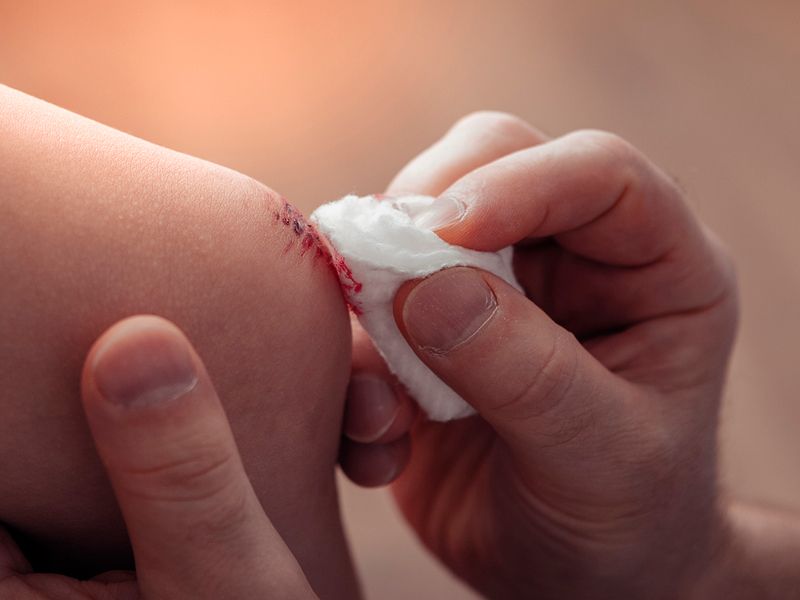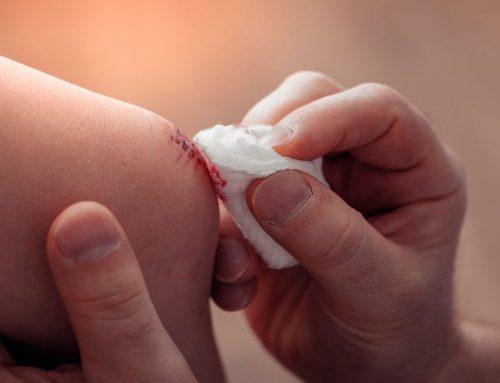Children are at the stage where exploring the world is a necessity, they are curious and active, so it is almost impossible not to suffer some scrapes and cuts in the attempt. Usually mom or dad’s kiss are excellent treatments, but they will always require more knowledge to help the wounds heal well.
We’ve all had cuts and scrapes and they are part of childhood.
Steps to follow to treat cuts and scrapes
1. Stop the bleeding
For minor cuts and scrapes, bleeding usually stops on its own. If necessary, apply gentle pressure with a clean bandage or cloth and elevate the wound until the bleeding stops.
2. Clean the wound
Wash the wound with water. Holding the wound under running tap water will decrease the risk of infection. Avoid getting soap in the wound. Also, do not use hydrogen peroxide or iodine, which can irritate. Remove any dirt or debris with tweezers previously cleaned with alcohol. Consult your doctor if you are unable to remove all debris.
Do you live in New York and need a pediatrician? Contact us HERE
3. Apply an antibiotic or petroleum jelly.
Apply a thin layer of antibiotic ointment or petroleum jelly to keep the surface moist and help prevent scarring. In some people, certain ingredients found in some ointments may cause a mild rash. If a rash appears, discontinue use of the ointment.
4. Cover the wound
Place a bandage, rolled gauze or gauze held in place with paper tape. Covering the wound keeps it clean. If the wound is only a minor scratch or scrape, do not cover it.
5. Vaccinate your child against tetanus.
Get a tetanus shot if you haven’t had one in the last five years and the wound is deep or dirty.
6. Look for signs of infection
See your doctor if you notice signs of infection on the skin or near the wound, such as redness, increased pain, drainage, warmth or swelling.
What can I do to make my child’s scar less visible?
There are some simple things you can do to minimize the appearance of your child’s scar once the skin has completely healed:
Note: scars cannot be completely removed and no treatment can make your child’s skin look exactly the same as it did before the injury.
You should read: Infant diabetes
Sun protection
Damaged skin is very susceptible to permanent discoloration from the sun for up to 6 months after an injury. It is very important to minimize sun exposure to the healing cut. Keep it covered with a hat or clothing as much as possible or use a broad-spectrum sunscreen to minimize darkening of the scar (called “hyperpigmentation”). Do not apply sunscreen until two weeks after the cut.
Scar massage
Scars can soften and flatten more quickly when they are massaged. Use your fingers to apply moderate pressure and massage or rub the scar in circles.
Silicone sheets or gels
Silicone products can help soften, flatten and improve the coloration of a scar if used for at least 12 hours a day.
When should we go to the Emergency Department of a Health Center?
- If the wound does not stop bleeding after 5/10 minutes of pressure.
- When the wound is deep and, therefore, there may be injuries in more internal tissues and / or if it is an open wound that may require suturing.
- If there is an object stuck in the wound. Do not try to remove it, as you can introduce it more, break it, make the wound bigger or bleeding.
- If the wound is produced by an animal or human bite.
We hope you liked this article. We invite you to follow us on Instagram and Facebook and visit our website where you can find more details of our pediatric services.







Leave A Comment